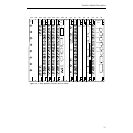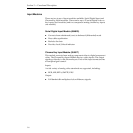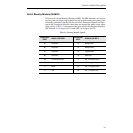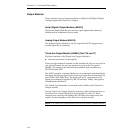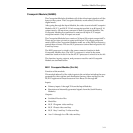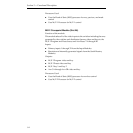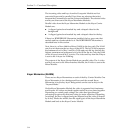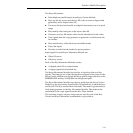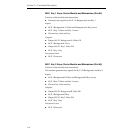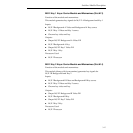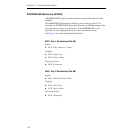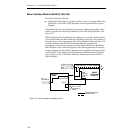
3-14
Section 3 — Functional Description
The incoming video and keys from the Crosspoint Module are first
converted from serial to parallel. Next, there are selectors that select
between the Chroma Keyer and the Crosspoint Module. The selected video
and key are then sent to the Keyer Mezzanine Modules.
Parallel video from the Keyer Mezzanine Module to the Keyer Carrier
Module are:
■ A clipped, gained and masked key and a shaped video for the
background
■ A clipped, gained and masked key and a shaped video for the key
If there is a BORDERLINE Mezzanine installed, the key goes onto that
module and has a border added to it. The BORDERLINE Mezzanine is
described later in this section.
Next, there is a a Non-Additive Mixer (NAM) in the key path. The NAM
can do a mix between the two keys of that M/E. The key NAM compares
the luminance level of Key 1 and Key 2 fills and puts the key that has the
highest instantaneous luminance level of its fill on the air. Only the NAM
on the A keyer for each M/E is active. The video and key from the B keyer
is sent to the A keyer for NAMing.
The outputs of the Keyer Carrier Module are parallel video. The A video
and keys are sent to the Mixer Interface Module, the B video is sent to the
Mixer Module.
Keyer Mezzanine (064826)
There are two Keyer Mezzanines on each of the Key Carrier Module. One
Keyer Mezzanine is for a background layer and the second Keyer
Mezzanine is for the key layer. Backgrounds can be used as keys in the
“Layered Mode.”
On the Keyer Mezzanine Module the video is separated into luminance
and chroma. All videos are timed together and all keys are timed together.
Depending on control panel settings, the video then goes through
processing for gain and offset and coring for noise reduction. Depending
on settings, the key is clipped and gain adjusted, and the video is shaped
by its key. Masks are added, then the signal goes off the keyer Mezzanine
Module and back to the Keyer Carrier Module.




